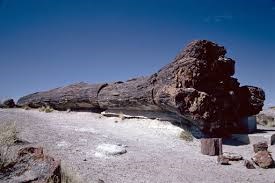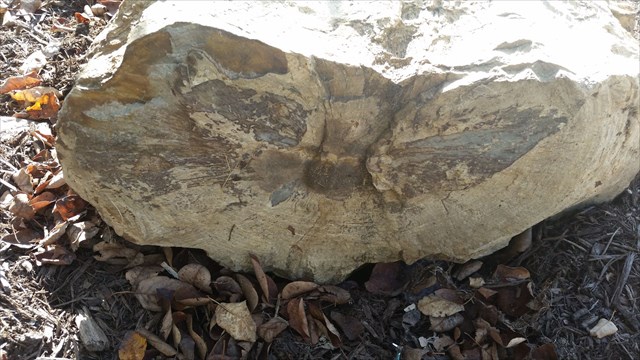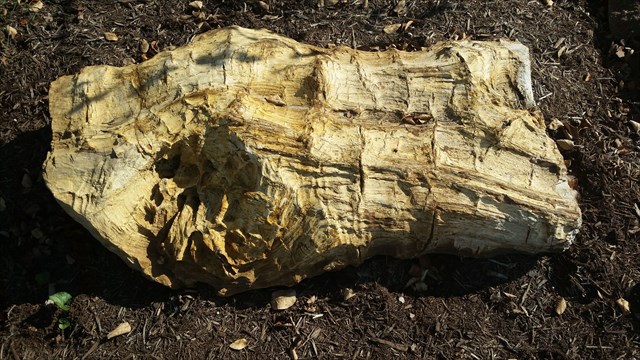ORVEC Petrified EarthCache
-
Difficulty:
-

-
Terrain:
-

Size:  (other)
(other)
Please note Use of geocaching.com services is subject to the terms and conditions
in our disclaimer.

Petrified
___________________________________________________________
 Not Here, But Near?
Not Here, But Near?
Millions of years ago, a natural event occurred which caused this area to be covered in mud. Trees were trapped beneath layers of mineral rich sediment. Oxygen was not able to reach these trees through this mud and this prevented the natural process of decay. Over time the organic material of the trees was replaced with minerals. Time passed and a river changed course, revealing millions of fossils and petrified wood. This petrified wood is a timeless sample of the vast ancient wood forest that once stood in the path of the river.
Petrified wood is a type of fossil. Petrified wood is fossil wood where all the organic material has been replaced with mineral, yet it retains the original structure of the actual wood.
The process of petrifaction occurs underground. The wood becomes buried under sediment and is preserved due to a lack of oxygen. Water flows through the sediment and deposits minerals (usually quartz) inside the plant. The organic material of the log is slowly replaced with stone that forms in its place.
Most people are familiar with the Petrified Forest National Park in Arizona. But, are you aware that petrified wood is found throughout the United States and the rest of the world? In fact, I would imagine that you found it surprising to find an example of petrified wood here here at the Falls of the Ohio. But, here it is, a 'survivor' of an ancient forest that once stood near here. This example was found nearby. Other examples exist, mostly downriver. None have been discovered on Goose Island.
The Falls of the Ohio River is a protected area and fossil/rock collecting is prohibited
It is interesting to notice the colors of the petrified wood. Pure quartz crystals are colorless. However, some petrified wood has elaborate color. Elements such as copper or iron oxides that are introduced as contaminants during the petrifaction process can result in color variations of the fossilized wood. Contaminates of cobalt, copper and chromium result in blue or green colors. Manganese oxides and carbon contamination result in black colorations. Manganese produces hints of pink and orange. Yellow, red and brown colorations result from iron oxides that were introduced during the petrifaction process.
______________________________________________________________________________
The posted coordinates will bring you to the petrified wood (not the image above). To earn credit for this earthcache and to demonstrate the educational value of your visit, please email answers to the following questions via my profile page:
1. How long is the petrified log seen here?
2. Can you see the age rings in the end of the log?
3. In your observation from the information provided, what influenced the log's color?
4. Which of the images below (A1, A2, A3) represent the example seen here?



Do not post answers in your log. As always, logs not followed by answers within 48 hours will be removed. You can always log again when prepared.
DO NOT POST IMAGES OF THIS LOCATION PLEASE
This Earthcache is listed with knowledge and permission of local governing entities
Additional Hints
(No hints available.)